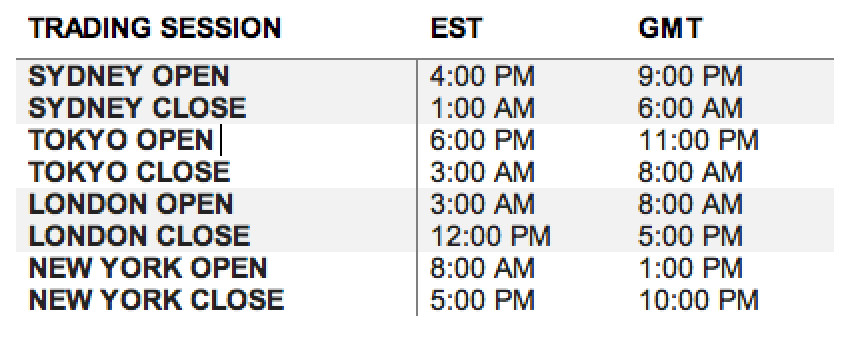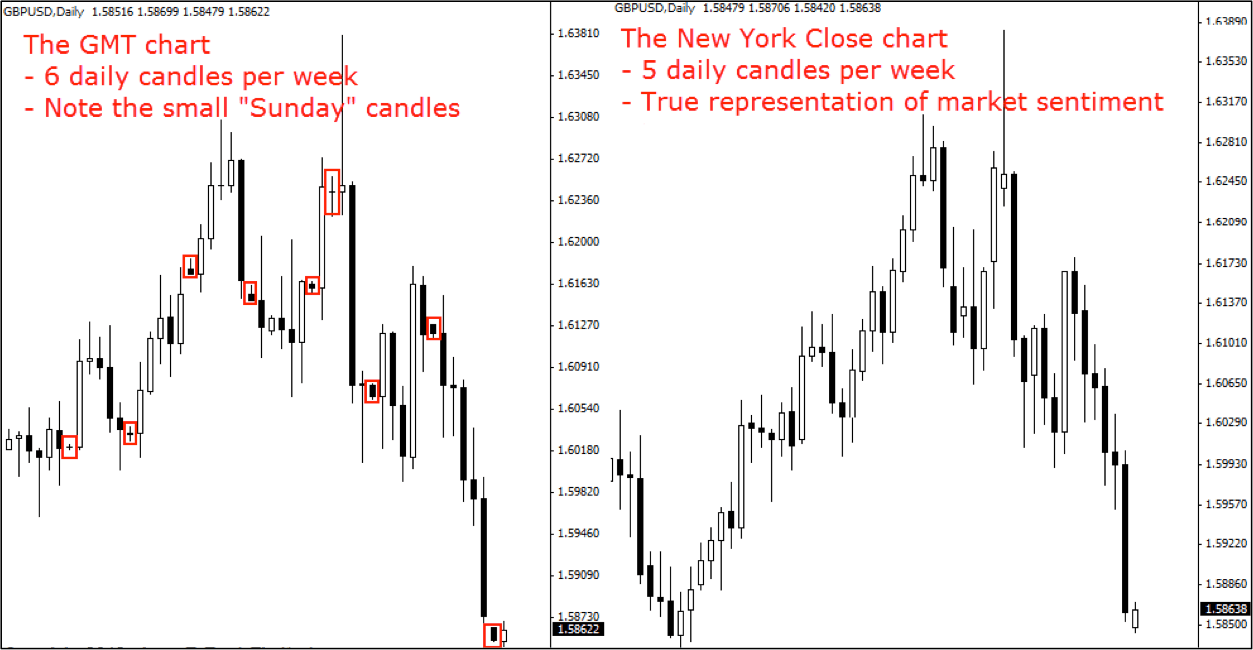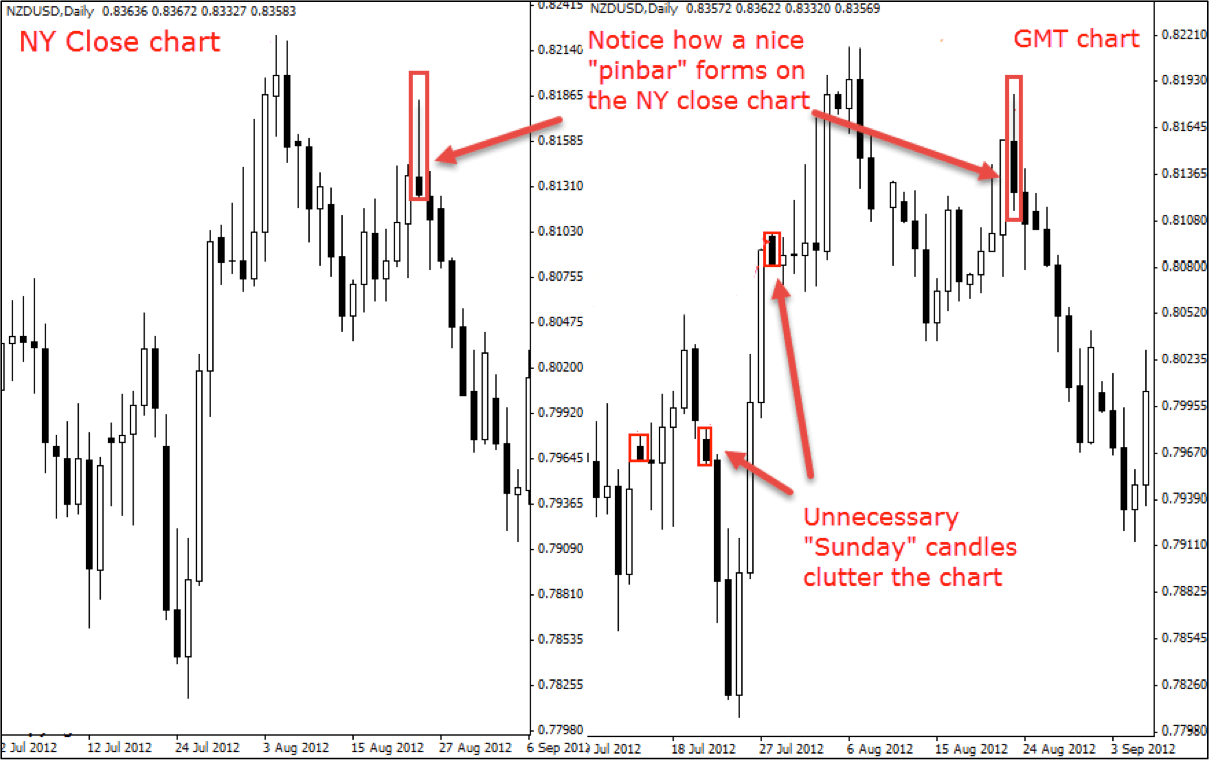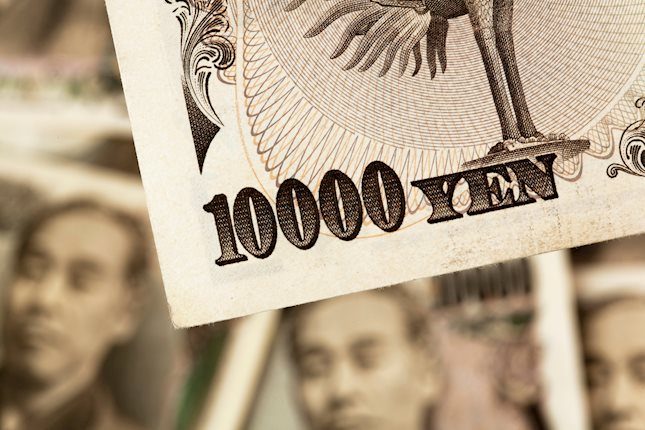Why New York Charts...
Why any serious trader should use the New York Close chart? Learning to trade the forex market can be a tough experience. You have probably read a lot of articles about trading strategies, registered to various online forex forums, and you are practicing whenever you have time to look at the charts. But, there is probably one thing that you've missed, that can have an enormous difference in your trading performance and learning efforts.
It's the type of charts that you use. To make the right trading decisions based on price-action, you need a simple and clean chart which shows you the real market sentiment, is compact and not cluttered with unnecessary information. You may ask, "Wait, but all charts are the same, aren't they?" -No, they are not. There is actually a big difference in the price feeds that forex brokers are using, with two main probably one thing that you’ve missed, that can have an enormous difference in your trading performance charts which we will discuss below: the GMT chart, and the New York Close chart.
The FOREX Market and New York Charts
Let me explain. The forex market is open six days per week, 24 hours a day. The New York session, London session, and Asia-Pacific trading session are all open at a different time, which makes the forex market open around the clock. The following table shows when the trading sessions open according to EST and GMT time zones.
Not all trading sessions have the same daily trading volume. You probably already know, that most of the market volatility takes place with the overlap between the London and New York session, which is from 8:00 AM to 12:00 PM EST. After that, the only session which has a significant market impact is the New York session, which ends each day at 5:00 PM from Monday to Friday. A more thorough explanation of why I am using the Daily timeframe can be found HERE.
What you want to look at is the closing price of the New York session. Unfortunately, the majority of brokers use chart types that are based on GMT time. This means, each candle opens at exactly 00:00 AM GMT, which creates a total of six daily candles per week. This type of charting creates unnecessary confusion and fake signals, as it usually has a small "Sunday" candle which opens at Sunday 11:00 PM GMT and closes at 00:00 AM GMT.
Be Careful: GMT charts are cluttered with redundant, unnecessary information (candles) which can also be confused with doji candles. Doji candles have a small body and usually mean a possible trend reversal, but as they are not true daily candles they are not relevant!
New York Close charts, on the other hand, have a total of five candles during a week and equal the closing price of each New York session. The closing prices are the most important number for price-action trading, as they truly represent the fight between bulls and bears and show who won the battle in the previous trading session.
In a nutshell, charts that don't rely on the New York Close are not suitable for any type of professional trading and analysis and I can't recommend them at all. Beside the small "Sunday" candles that clutter the chart and create fake signals, the particular closing prices of GMT charts are not showing the real picture of the market sentiment. In the end, if you are not using New York Close FOREX Charts, you will not see the same results. That's why I encourage you to try them, especially if you are serious about price-action trading.
What Is The Difference Between GMT and New York Close Charts On The Screens?
Let's take a look at the difference between a GMT chart and a New York Close chart.
As you can see, the New York Close chart has no unnecessary "Sunday" candles which can confuse traders. Notice the small candles in red on the left GMT chart.
Be careful: If you rely on candlestick patterns in your trading, GMT charts would generate a lot of fake signals which could ultimately cost you a lot of money.
There are a lot of dojis and other candlesticks with small bodies, due to the small time-frame that they represent (only one hour after the Tokyo session opens). The New York Close chart, on the other hand, represents exactly the New York session trading day, which is extremely important for price-action trading. Closing prices are the most important prices for any market, not just forex. To make the right trading decisions, you need to make sure that you have the right price feed.
Look at the real-life difference between the NY Close chart (left) and GMT chart (right). While a nice pinbar candlestick forms on the NY Close chart, which triggers a profitable short position afterwards, there is nothing similar on the GMT chart. Even more, the "Sunday" candles dilute traders' attention and can give costly "fake signals", i.e. if the irrelevant "Sunday" candles form a doji or shooting star.
If you don't know which charts your broker uses, the easiest way to find out is by watching when the daily candle closes.
Tip: If the time is different from 5:00 PM EST, your broker uses another chart feed than the New York Close, most probably the GMT type of chart.
Final Words
am not saying that you can't be a profitable trader with GMT charts. I have traded myself on GMT charts before I discovered the New York Close charts. Once you switch to New York Close charts, you will immediately feel the difference while just looking at the chart – it's more compact, has 5 daily candles during a week, and you know that each candle's closing price represents the close of the New York session at 5:00 PM EST. I find it now much easier to discover profitable trading patterns while looking at the New York Close charts.
If you want to become a professional price-action trader, one of the most important things is to start from the foundation – which are the charts. You want compact and clean charts, which truly represent the fight between the bulls and the bears.
Happy Trading,
This material is written for educational purposes only. By no means do any of its contents recommend, advocate or urge the buying, selling or holding of any financial instrument whatsoever. Trading and Investing involves high levels of risk. The author expresses personal opinions and will not assume any responsibility whatsoever for the actions of the reader. The author may or may not have positions in Financial Instruments discussed in this newsletter. Future results can be dramatically different from the opinions expressed herein. Past performance does not guarantee future results.
Editors’ Picks
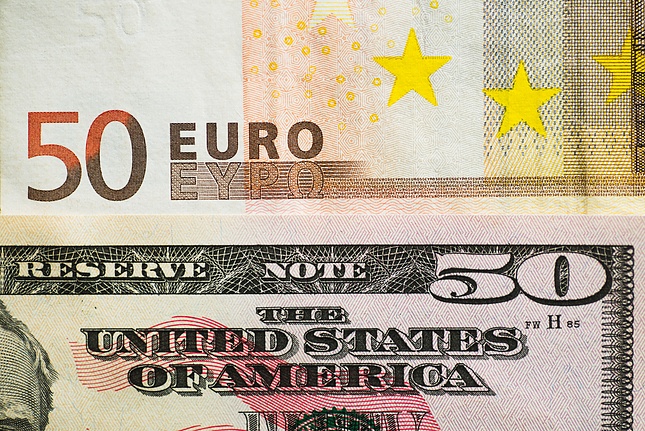
EUR/USD consolidates gains below 1.0500 amid weaker US Dollar
EUR/USD holds gains below 1.0500 in European trading on Monday, having recovered from its two-year low of 1.0332. This rebound is due to a sell-off in the US Dollar and the US Treasury bond yields amid a US bond market rally. The focus shifts to German data and ECB-speak.

GBP/USD flirts with 2600 on the road to recovery
GBP/USD is trading close to 1.2600 early Monday, opening with a bullish gap at the start of a new week. A broad US Dollar decline alongside the US Treasury bond yields on appointment of a fiscal hawk Scott Bessent as the Treasury Chief helped the pair stage a solid comeback.

Gold: Is the tide turning in favor of XAU/USD sellers?
After witnessing intense volatility in Monday's opening hour, Gold's price is licking its wounds near $2,700. The bright metal enjoyed good two-way trades before sellers returned to the game after five straight days.

Elections, inflation, and the bond market

Eurozone PMI sounds the alarm about growth once more
The composite PMI dropped from 50 to 48.1, once more stressing growth concerns for the eurozone. Hard data has actually come in better than expected recently – so ahead of the December meeting, the ECB has to figure out whether this is the PMI crying wolf or whether it should take this signal seriously. We think it’s the latter.
RECOMMENDED LESSONS
Making money in forex is easy if you know how the bankers trade!
Discover how to make money in forex is easy if you know how the bankers trade!
5 Forex News Events You Need To Know
In the fast moving world of currency markets, it is extremely important for new traders to know the list of important forex news...
Top 10 Chart Patterns Every Trader Should Know
Chart patterns are one of the most effective trading tools for a trader. They are pure price-action, and form on the basis of underlying buying and...
7 Ways to Avoid Forex Scams
The forex industry is recently seeing more and more scams. Here are 7 ways to avoid losing your money in such scams: Forex scams are becoming frequent. Michael Greenberg reports on luxurious expenses, including a submarine bought from the money taken from forex traders. Here’s another report of a forex fraud. So, how can we avoid falling in such forex scams?
What Are the 10 Fatal Mistakes Traders Make
Trading is exciting. Trading is hard. Trading is extremely hard. Some say that it takes more than 10,000 hours to master. Others believe that trading is the way to quick riches. They might be both wrong. What is important to know that no matter how experienced you are, mistakes will be part of the trading process.

Best Forex Brokers with Low Spreads
VERIFIED Low spreads are crucial for reducing trading costs. Explore top Forex brokers offering competitive spreads and high leverage. Compare options for EUR/USD, GBP/USD, USD/JPY, and Gold.
